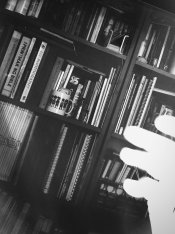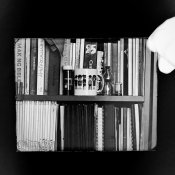Herzeleid
Member
Hi everyone,
I dabble in various alternative process and wet collodion, but I recently gave up on making collodion negatives. Although it is far easier to have ambrotypes and tintypes, time and effort wise it is very frustrating to have clean and problem free negatives. So I decided to try making silver gelatin emulsion to coat on glass.
I read a lot of the posts here and read many articles at the lightfarm. My first attempt was not washed adequtely, I had crystals on the surface and extremely slow emuslion. Luckily at the second attempt I had clean plates but this time I had quite thin images and also long exposure times.
The problem is due to my hand coating method, I poured so much of the emulsion from the plate as if I am making collodion plate. I think I can remedy that in my next attempt.
I follow the formula from thelightfarm, modified AJ-12. I also use chrome alum and thymol. I use food grade gelatin so I aim no to exceed 50C during ripening and digestion. I measure fog around 0.1D, however I cannot trust it yet without making a proper problem free coating. I have used Parodinal 1+10 for 10mins to develop the plates.
I have erythrosine, tartrazine and eosinY so I will definitely attempt at orthochromatic sensitization at some point.
I am open to advice at the moment. Is it a practical way to gain speed with sulfur sensitization. Faster precipitation followed by a sulfur sensitization with thiosulfate.
Regards
I dabble in various alternative process and wet collodion, but I recently gave up on making collodion negatives. Although it is far easier to have ambrotypes and tintypes, time and effort wise it is very frustrating to have clean and problem free negatives. So I decided to try making silver gelatin emulsion to coat on glass.
I read a lot of the posts here and read many articles at the lightfarm. My first attempt was not washed adequtely, I had crystals on the surface and extremely slow emuslion. Luckily at the second attempt I had clean plates but this time I had quite thin images and also long exposure times.
The problem is due to my hand coating method, I poured so much of the emulsion from the plate as if I am making collodion plate. I think I can remedy that in my next attempt.
I follow the formula from thelightfarm, modified AJ-12. I also use chrome alum and thymol. I use food grade gelatin so I aim no to exceed 50C during ripening and digestion. I measure fog around 0.1D, however I cannot trust it yet without making a proper problem free coating. I have used Parodinal 1+10 for 10mins to develop the plates.
I have erythrosine, tartrazine and eosinY so I will definitely attempt at orthochromatic sensitization at some point.
I am open to advice at the moment. Is it a practical way to gain speed with sulfur sensitization. Faster precipitation followed by a sulfur sensitization with thiosulfate.
Regards










 The Light Farm desperately needs a topics index. Someday!
The Light Farm desperately needs a topics index. Someday!



